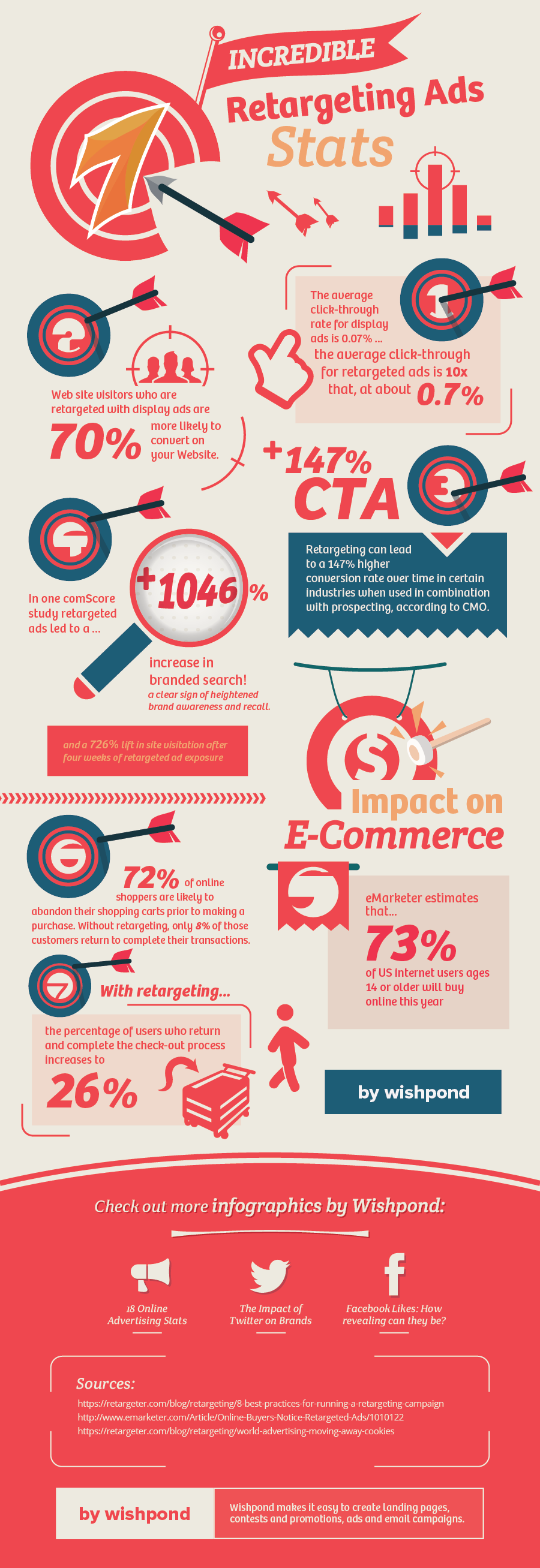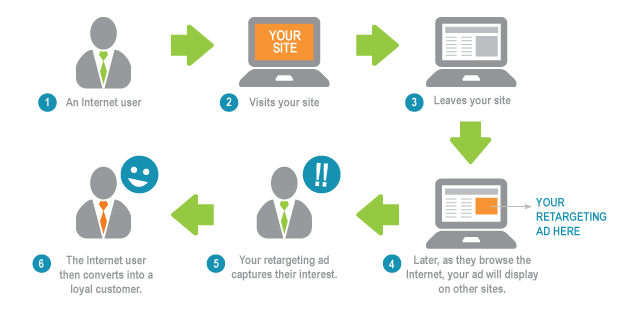So you have seen a watch online and think it’s nice but you recently bought one so you can’t really justify buying another one just yet.
Boom, the same watch ad follows you online where ever you go. You might think this is strange or pure coincidence – it is not; this is a retargeting ad.
This ad follows you in the cloud until you are ready to buy or at least keeps reminding how good this watch will look on your wrist.
Key Takeaways:
- Retargeting Ads Recapture Interest: Retargeting aims to convert 98% of visitors who don’t purchase on the first visit, boosting conversions and brand awareness.
- How Retargeting Works: Retargeting uses cookies to follow website visitors, showing them relevant ads across sites or social media to reignite their interest.
- Ad Effectiveness and Conversion: Retargeted ads yield higher click-through rates, increased brand recognition, and repeated customer engagement at low cost-per-click or per-view.
- Audience Segmentation Enhances Results: Segmenting visitors based on product interest allows more tailored ads, providing personalized reminders and increasing purchase likelihood.
- Mindful Frequency Matters: Overexposing users to retargeting ads can lead to fatigue. Aim to display ads 7-12 times within a month for optimal impact.
What is Retargeting?
Retargeting works by keeping track of people who visit your site and displaying your retargeting ads to them as they visit other sites online. Retargeting converts window-shoppers into buyers. Generally, 2% of shoppers convert on the first visit to an online store. Retargeting brings back the other 98% – AdRoll.
How Does Retargeting Work?
Retargeting works by placing an anonymous cookie on the browser of your website visitors. An ad is then displayed to the same visitor once they leave your site. Ad networks like AdRoll, Google, Bing, StumbleUpon and even Facebook allow for retargeted ads. The social media version of retargeting only happens within the social media network of course.
The retargeting ad supplier will give you the code that needs to be included on your site. Here is an image that shows how retargeting works:
The Effectiveness of Retargeted Ads
- Retargeting brings “window shoppers” back and increases online sales.
- While retargeting also increases your brand awareness and reach as ads will be constantly displayed to interested web visitors.
- Retargeting ads are associated with high click-through rates and increased conversions.
- Repeat customers at very low-cost; either cost per click or cost per page view.
- 46% of Search Engine Marketing (SEM) professionals believe retargeting is the most underutilized online marketing strategy.
How to Get the Best Out of Your Retargeted Ads?
- Segment your website visitors into people who showed interest in different products. For example, mobile phones vs laptops.
- Customize the ad to each group. You can show them more of the same product range, a different product or display no ads for people who already bought.
- Have a clear Call-To-Action and provide an offer.
- Customize your retargeting ads for different times depending on the product. For example, if someone is looking for flights you can retarget them for accommodation immediately but if they are looking for a luxury or high-end item then you might want to retarget them later.
- Start your retargeting campaign only when you have reasonable site visitors. Daryl Mander who is an expert, specialising in retargeting recommends 5,000 unique visitors per month as a starting point. If you don’t have a large pool of visitors your retargeting pool will be even smaller.
- Too much retargeting can be a negative. You want to remind potential customers about your products and services; this does not mean you stalk them online. According to Moz, an ideal retargeting campaign shows the ad 7 to 12 times over the course of 30 days.
6 Common Retargeting Mistakes to Avoid
- Over-Targeting or Over-Exposure: One of the biggest turn-offs for customers is seeing the same ad repeatedly, especially if they’ve already decided against buying. Over-targeting leads to “ad fatigue,” which can negatively impact brand perception. To avoid this, limit the frequency of ad exposure, ideally to 7-12 times within a 30-day period.
- Ignoring Audience Segmentation: Treating all visitors as a single audience often leads to irrelevant messaging. Segment your audience based on behaviors, such as product pages visited, items added to the cart, and time spent on your site. This approach allows you to deliver ads that are highly relevant and more likely to convert.
- Using Generic or Unappealing Ads: Retargeting ads should be tailored to the interests of the specific audience segments you’ve identified. Avoid bland, generic messaging in favor of dynamic ads that showcase products or services the visitor has shown interest in, along with clear calls-to-action.
- Poorly Timed Retargeting: Timing matters. Displaying ads too soon after a site visit might seem intrusive, while waiting too long may reduce relevance. Test different timing strategies to find the balance that keeps your brand top-of-mind without overwhelming visitors.
- Ignoring Conversion Exclusions: If a customer has already completed a purchase, showing them the same retargeting ad can feel like spam. Set up conversion exclusions in your ad campaigns to ensure that customers who have already bought from you aren’t re-targeted with the same product.
- Neglecting Mobile Optimization: Many users now browse on mobile, so if your retargeting ads and landing pages aren’t optimized for mobile devices, you may lose conversions. Ensure all aspects of your retargeting campaign provide a smooth experience on mobile.
Ethics and Privacy in Retargeting
- Transparency and Consent: Clearly inform visitors about cookie usage and how their data will be used. Display a cookie consent banner that allows users to opt-in or out of tracking, which can improve trust and compliance with regulations like GDPR and CCPA.
- Frequency and Respect for User Choice: While retargeting is designed to increase visibility, respecting user preferences is essential. Avoid stalking users with frequent ads that could make them uncomfortable. Implement a limit on ad exposure to reduce intrusiveness and improve user perception.
- Data Privacy and Security: With growing concerns around data security, make sure any personal or behavioral data collected is securely stored and only used for retargeting within legal parameters. Partnering with reputable ad networks that prioritize data security helps safeguard user information.
- Avoid Sensitive Categories: Retargeting should be used cautiously when it comes to sensitive product categories (e.g., medical, financial, or personal items). Customers may not appreciate ads that highlight personal purchases or searches, especially when they are seen by others who use the same device.
- Offer an Opt-Out Option: Make it easy for users to opt-out of retargeting. Providing an option in your privacy policy or within ad networks gives customers control over their online experience and demonstrates respect for their preferences.
- Relevance Without Intrusion: Striking a balance between relevant ads and respecting privacy is crucial. Retargeting ads should feel helpful rather than intrusive, offering gentle reminders rather than aggressive pushes to buy.
Wrapping Up
Retargeting takes time, period; it is not a set and forget activity. Sure, it can bring in awesome results but you would need to do research upfront and change things based on testing and feedback.
So if you are excited to try retargeting; make sure you have a decent budget and time to invest.


